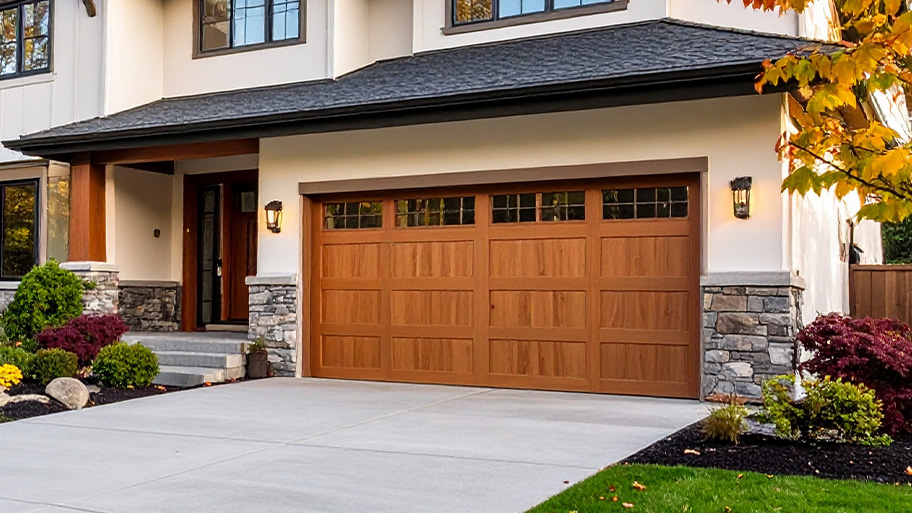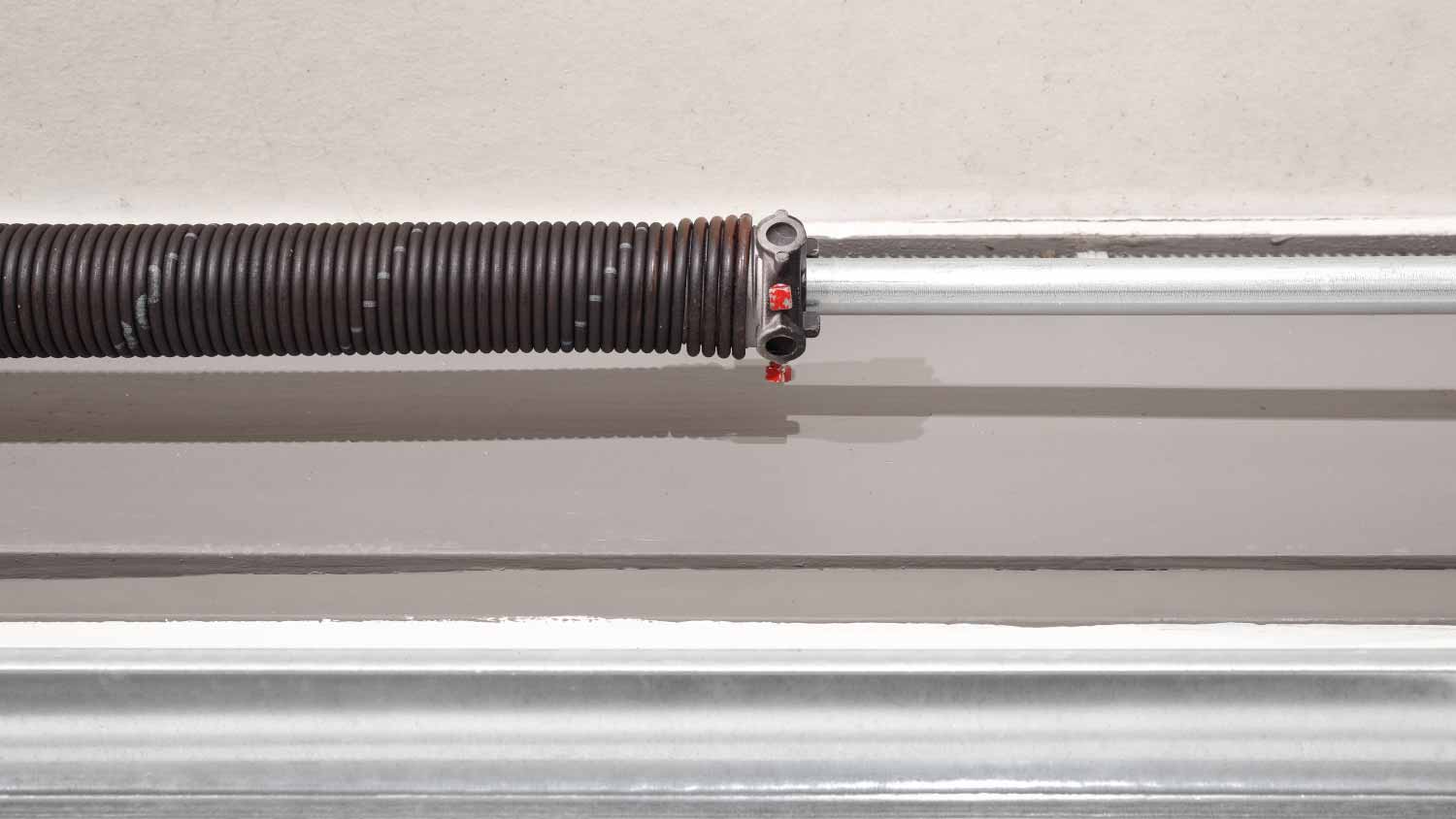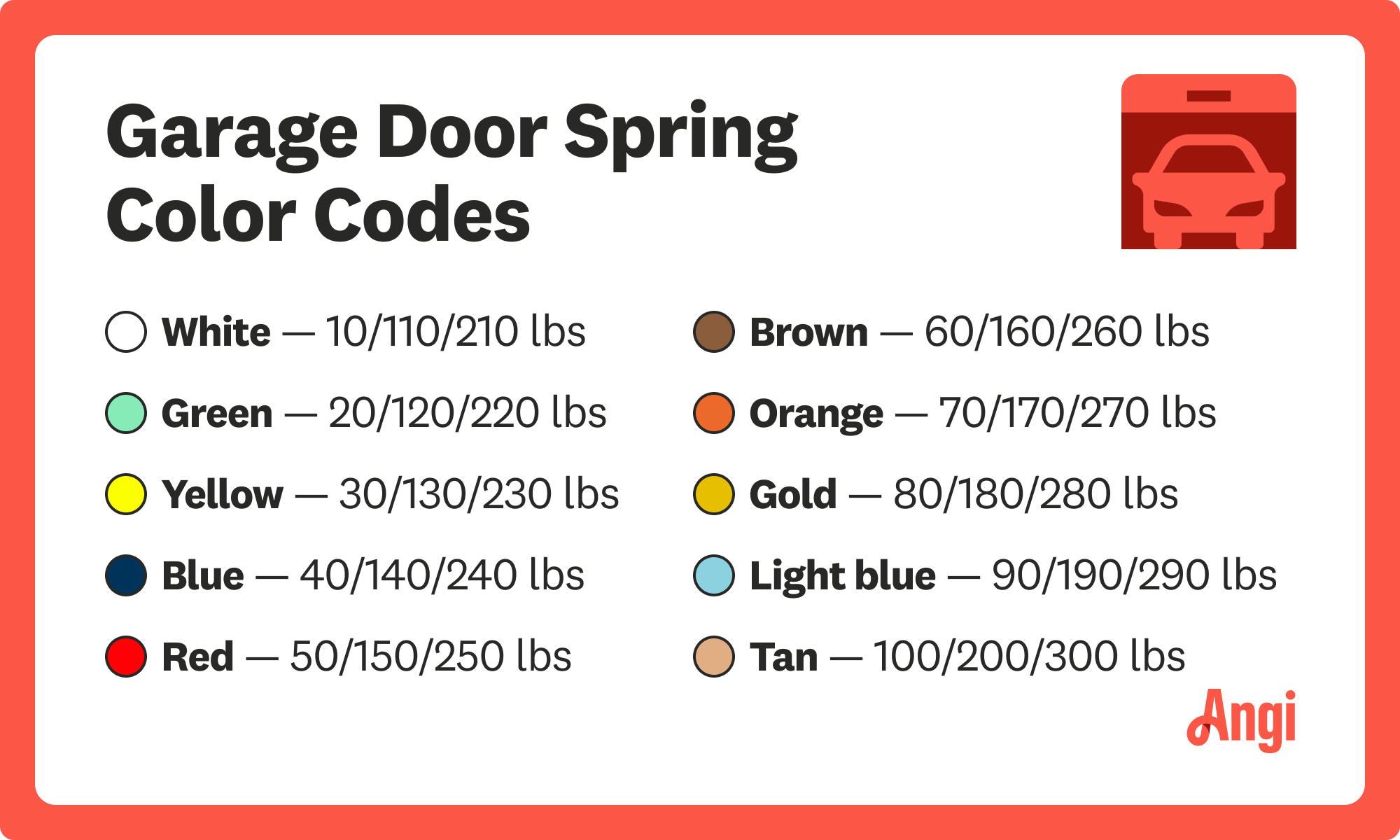
Replacing a garage door is necessary to add security and value to your home. Learn how each door type affects the total cost of this project in Columbus, OH.
The best way to size garage door replacement springs is by measuring accurately and factoring in the garage door weight


The type of garage door spring influences the size of the spring.
Extension and torsion springs have different color and sizing codes.
Your garage door’s weight plays the biggest role in the size of the spring.
Always work with a pro to replace garage door springs.
If your old garage door spring broke or you recently installed insulation that increased your garage’s weight, then you may be in the market for a new garage door spring. But with all the information that comes with spring measurement systems, knowing which replacement spring you need isn’t always so straightforward. Let’s spring into how to size garage door replacement springs so you can decipher the correct measurements and codes to get the perfect fit.
You may encounter several numbers when looking at your existing garage door spring or while shopping for new parts. The spring type will determine which numbers you’ll see, making it important to know whether you have an extension or torsion spring. With this in mind, here are the standard garage door spring sizes by code and spring type to help you figure out what size garage door spring you need.
The most common garage door spring size for an extension spring is number 728, with 7 accounting for the wire gauge and 28 indicating the spring’s length. Sizes range anywhere from numbers 300 to 900, so it’s important to have a professional size your garage door spring replacement.
The average torsion spring size for a standard single garage door is around 243x2x28. Torsion spring sizes have a completely different coding system than extension springs, with numbers ranging from 207x2x22 to 262x2x32. The first number represents the wire diameter, the second number is the outer diameter, and the third number is the total length.
The standard garage door spring size depends on the type of spring and the size and weight of the garage door. For a tension spring, the average size is between 32 and 40 inches long, with an internal diameter of 2 inches, while extension springs have an average size of 25 to 27 inches, with an internal diameter of 2 inches.
| Spring Type | Length (in) | Diameter (in) |
|---|---|---|
| Torsion spring | 32–40 | 1.75–2 |
| Extension spring | 25–27 | 1.75–2 |
Torsion springs have tight, loaded coils that operate with a twisting motion. The springs unwind to lift the door and tighten as the door shuts. The average torsion spring size is 1.75 to 2 inches in diameter—measured from the inside. Your torsion spring’s length can range from 32 to 40 inches on average.
Extension springs elongate as the garage door weight increases and contain hooks on each end to pull the springs. The average extension spring size is between 25 and 27 inches, with an interior diameter of around 1.75 to 2 inches.

Measuring the correct garage door spring size requires dusting off your old geometry book, so follow these steps to get started:
Use your old garage door spring as a template to acquire the right measurements.
Measure the spring from the top of the spring to the bottom using a measuring tape.
Use the measuring tape to measure the internal diameter of the spring.
To get the wire size, measure 10 coils while the spring is compressed.
Divide the measurement by the number of coils.
Repeat steps 4 and 5 by measuring 20 coils to confirm the number’s accuracy.
Take into consideration whether or not the spring has a lift-hand or right-hand wind.
If your garage door spring is still wound, it’s important not to attempt to measure the spring yourself. Springs can be extremely dangerous, so you should contact a local garage door installer to handle the task.
Even if your spring isn’t wound and you want to try installing a garage door spring yourself, it’s safer to work with an experienced company. Your pro will be able to confirm your measurements before ordering replacement parts, which decreases the risk of injury that can come with incorrectly measuring your garage door spring.

The Door & Access Systems Manufacturers Association (DASMA) created a helpful and official color code system for both torsion and extension springs that can help you quickly identify the correct spring for your garage door if your existing spring matches the color.
While you can use this to help you confirm the size from your measurements, there are 50 tension and 27 extension spring colors, which can make it challenging to use the colors alone to determine the size. DASMA states that you should use physical spring measurements along with the weight of your door and specific information from the door manufacturer to verify the garage door spring size—especially for older springs.
A few factors can influence the size of a garage door spring. If you’re installing a new garage door, you’ll need to consider the door weight, size, type, wind direction, and whether or not it’s insulated before you buy a new spring.
Weight is one of the biggest factors in what size garage door replacement spring you’ll need. The average single garage door weighs anywhere from 125 to 250 pounds, or approximately 140 pounds. If your door weighs less than or more than this average, then your garage may need a less common spring size.
Wooden garage doors are one of the heaviest materials and require multiple springs to operate, followed by steel garage doors. Meanwhile, aluminum and fiberglass garage doors are lightweight and typically can get by with a single spring.
If you have a double garage door, your door will weigh twice the amount of a typical single door, or between 250 and 500 pounds. As a result, you’ll need stronger or multiple springs to lift your garage door. Most garage installers will use two or more springs rather than increase the gauge of the wire to achieve the best garage spring size for your larger garage.
Most garage doors need your typical torsion or extension springs, but one type of garage door operates differently. If you have a steel rolling garage door, you’ll need specialized steel rolling door torsion springs designed specifically for that door type.
You could have all of the measurements down pat, but if you don’t know which direction the springs wind, you’ll be out of luck. A spring can either be right-wound or left-wound, which simply means the direction the spring twists. Looking at the spring you plan on replacing, if it’s a left-hand spring, the end of the wire will point to the right, while a right-hand spring will point to the left.
Another element you don’t want to overlook is your garage door’s insulation or lack thereof. If you purchased a garage door that weighs 150 pounds but installed insulation, this could increase the weight of your garage door by 10% to 20%—a difference that may very well impact the size of your garage door spring.
It’s a good idea to consult with a pro if you’ve recently installed garage door insulation because your garage door spring might need an upgrade with the additional weight. A professional garage installation company has the experience needed to accurately account for the unique circumstances of your garage door system to ensure you don’t install the incorrect size.
Accuracy is extremely important when choosing a garage door spring—there is no room for error. If you choose the wrong garage door spring size, several issues can arise that could harm you or your home. Here are the pitfalls of using an incorrectly sized garage door spring.
A garage door spring that's too small won't have the strength to open your garage door. This can make the door stay stubbornly shut, or, worse, knock the garage door off its tracks. Since garage doors weigh anywhere from 80 to 500 pounds, a door that falls over can cause serious damage to your home, property, vehicle, or family.
If you choose a garage door spring that’s too big for your garage door, you’ll see potential garage door problems that are just as dangerous as a weak spring. Namely, larger springs might overpower the garage door, leading to a forceful impact that can jolt the door. This force can do any of the following:
Damage the garage door mechanisms, leading to garage door repair costs ranging from anywhere between $150 and $375
Cause injuries from bouncing into the top of the garage and ricocheting into anyone who walks underneath
Damage your property or cause injury from slamming into the ground too fast
Derail and fall off the tracks, harming anyone or anything in its way
Result in your garage door refusing to close or getting stuck, which could compromise your home security
If you have the wrong-sized garage door spring, your best option is to contact a garage builder near you to safely replace the spring with the right-sized garage door spring.
From average costs to expert advice, get all the answers you need to get your job done.

Replacing a garage door is necessary to add security and value to your home. Learn how each door type affects the total cost of this project in Columbus, OH.

If you live in a climate that experiences harsh winters and summers, you should consider an insulated garage door. Learn what impacts the costs and how it can help save you money over time.

Your garage door belt replacement cost depends on labor and material prices in your location, plus any other repairs needed to minimize belt wear.

Learn how to open your garage door manually during an outage safely without damaging the garage door. Never get stuck again.

Learn how to frame a garage door with our guide that includes instructions for each step, from measuring the rough opening to installing the side jambs.

A broken garage door needs to be fixed by a pro. Here are the top questions you should ask about garage door repair when hiring a contractor.